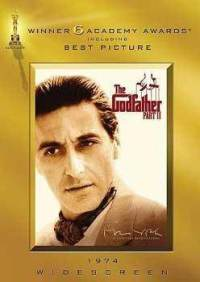The career of many actors in Hollywood is based on the image created by the film studio’s bosses to promote new products. The top of Alfredo James Pacino’s career is associated with the 1970s when ‘New Hollywood’ developed. Al Pacino was an unknown actor when he was chosen for the role in The Godfather (1972) directed by Francis Ford Coppola.
It is important to note that the role of Michael Corleone made Al Pacino one of the most famous film gangsters. Moreover, the promoted image of a mobster determined the further career of Al Pacino who is famous today for his characters of handsome and influential bandits.
‘New Hollywood’ of the 1970s was characterised by paying much attention to both mainstream and auteur cinema. The mainstream directors such as Francis Ford Coppola depended on the vision and position of the studio’s producers. Casting actors for the role of Michael Corleone, Francis Ford Coppola took risks while choosing Al Pacino for the role because his appearance was discussed by the producers as inappropriate for the character.
Thus, “cast by Francis Ford Coppola against all advice, nearly fired for under-emoting, Pacino enters The Godfather (72) as an All-American boy”, and his appearance of an Italian-American becomes the remarkable feature important for accentuating the character of Michael Carleone in contrast to the producers’ vision.
Such conflicts in opinions were typical for the work process, but the viewpoints of producers and executives were usually taken into consideration. Furthermore, “the economic imperatives of the industry shaped the very nature of the product itself”. Thus, directors and actors were hired by Paramount Picture’s studio, and the opinion of the producers was extremely important for creating the image of a star.
Al Pacino’s Michael Carleone was one of the leading figures in The Godfather (1972), but the main accents were made on Marlon Brando’s character. The situation changed in 1974 when the second part of the trilogy was produced.
The studio’s producers chose the image of Al Pacino to promote The Godfather. Part II (1974) because of the popularity of Michael Carleone’s character playing by Al Pacino.

According to Klaprat, “in promoting the pictures, the advertising and publicity departments built up the uniqueness of the star by transforming his or her personal life to match the screen persona”. It was paid much attention to the aspects of Al Pacino’s biography which could be discussed as effective to promote The Godfather’s trilogy.
The image created during the work at the trilogy was later actively used by the other studios’ producers. From this point, the creators of the first part of The Godfather influenced the further film career of Pacino. Producers of different studios discussed Pacino as the ‘ideal’ heartless gangster with the enormous charisma, and this image was intensively promoted.
However, the critical appraisal of Al Pacino’s works helped him receive the reputation of a talented actor and a master of Stanislavski System.
Nevertheless, the actor’s appearance and image were the decisive factors in choosing Pacino for this or that role. Moreover, the image of Al Pacino as a charismatic mobster which was used in films and advertisements can be discussed as one of the effective examples of ‘New Hollywood’s’ images created and promoted in the 1970s.
Bibliography
Klaprat, Cathy. “The Star as Market Strategy: Bette Davis in Another Light”. In The American Film Industry, edited by Ted Balio, 351‐376. Madison, WI: University of Wisconsin Press, 1985.
Murphy, Kathleen. “Dancing on the High Wire: Al Pacino”. Film Comment 36, no. 2 (2000): 18-31.
“The Godfather. Part II”. Tower Video. Web.